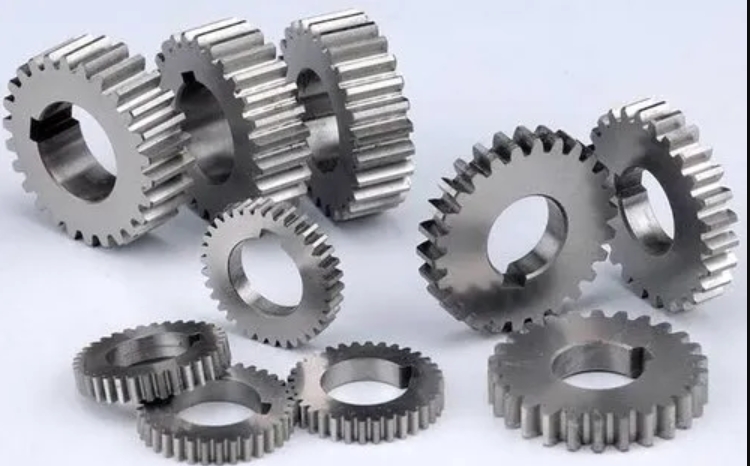As the automotive industry shifts towards electric vehicles (EVs), new challenges and opportunities arise in optimizing vehicle components. One critical area of focus is the reduction of noise generated by the drivetrain, particularly from spur gear. Unlike internal combustion engine vehicles, where engine noise can mask gear noise, electric vehicles operate more quietly, making gear noise more noticeable. This article explores strategies for optimizing spur gear design to minimize noise in electric vehicles, including advanced materials, tooth profile modifications, and innovative manufacturing techniques.

Introduction
Electric vehicles (EVs) are gaining popularity due to their environmental benefits and improved efficiency. However, the quiet operation of electric motors brings attention to other sources of noise within the vehicle, such as spur gear in the drivetrain. Spur gear, which are commonly used for their simplicity and efficiency, can produce significant noise if not properly designed. Optimizing spur gear design for noise reduction is essential to enhance the driving experience and meet consumer expectations for quiet EV operation.
Sources of Gear Noise
Gear noise in EVs can be attributed to several factors, including:
- Tooth Impact: The impact of spur gear teeth during meshing can generate noise.
- Tooth Surface Roughness: Surface irregularities increase noise levels.
- Gear Misalignment: Misalignment leads to uneven load distribution and noise.
- Vibration: Gear-induced vibrations can amplify noise.
Strategies for Noise Reduction
- Material Selection
- Tooth Profile Modification
- Precision Manufacturing
- Lubrication Techniques
- Damping Methods
Material Selection
Choosing the right material for spur gear can significantly affect noise levels. Advanced materials like high-strength steels, composites, and specialized polymers can reduce noise by absorbing vibrations and providing smoother tooth surfaces.
Tooth Profile Modification
Modifying the tooth profile to include features such as helical teeth or asymmetric profiles can reduce the impact forces during meshing, thereby lowering noise. Involute profiles with optimized pressure angles can also contribute to quieter operation.
Precision Manufacturing
Precision manufacturing techniques ensure that spur gear teeth are produced with minimal deviations from the desired profile. Advanced methods such as CNC machining and additive manufacturing can achieve high precision, reducing noise caused by surface roughness and misalignment.
Lubrication Techniques
Effective lubrication reduces friction and wear, which in turn decreases noise. High-performance lubricants and automatic lubrication systems can maintain optimal lubrication conditions, enhancing noise reduction.
Damping Methods
Incorporating damping materials and structures within spur gear housing or the vehicle chassis can absorb vibrations and reduce noise transmission. Techniques such as applying damping coatings or using resilient mounts can be effective.
Comparative Analysis of Noise Reduction Strategies
| Strategy | Noise Reduction Effectiveness | Implementation Cost | Complexity |
|---|---|---|---|
| Material Selection | High | Medium | Medium |
| Tooth Profile Modification | Very High | High | High |
| Precision Manufacturing | High | High | High |
| Lubrication Techniques | Moderate | Low | Low |
| Damping Methods | High | Medium | Medium |
Case Study: Noise Reduction in EV Drivetrains
A case study conducted on an electric vehicle drivetrain revealed that integrating helical gears, precision manufacturing, and advanced lubrication reduced noise levels by 40%. The use of high-strength steel with optimized tooth profiles further contributed to a quieter operation. Additionally, implementing damping materials within the gearbox housing reduced vibration-induced noise by an additional 20%.
Future Directions in Spur Gear Noise Reduction
Future advancements in spur gear design and manufacturing are expected to focus on:
- Advanced Composite Materials: Development of new composites that offer high strength and vibration damping properties.
- Adaptive Gear Systems: Implementation of adaptive gear systems that adjust tooth profiles in real-time to optimize noise reduction.
- Integration with Digital Twins: Using digital twin technology to simulate and optimize gear design for noise reduction before physical production.
Conclusion
Optimizing spur gear design for noise reduction is critical for the advancement of electric vehicles. By employing strategies such as selecting advanced materials, modifying tooth profiles, utilizing precision manufacturing techniques, ensuring effective lubrication, and incorporating damping methods, significant reductions in spur gear noise can be achieved. These improvements not only enhance the driving experience but also contribute to the overall appeal and acceptance of electric vehicles. As technology progresses, further innovations will continue to refine spur gear design, making electric vehicles even quieter and more efficient.
